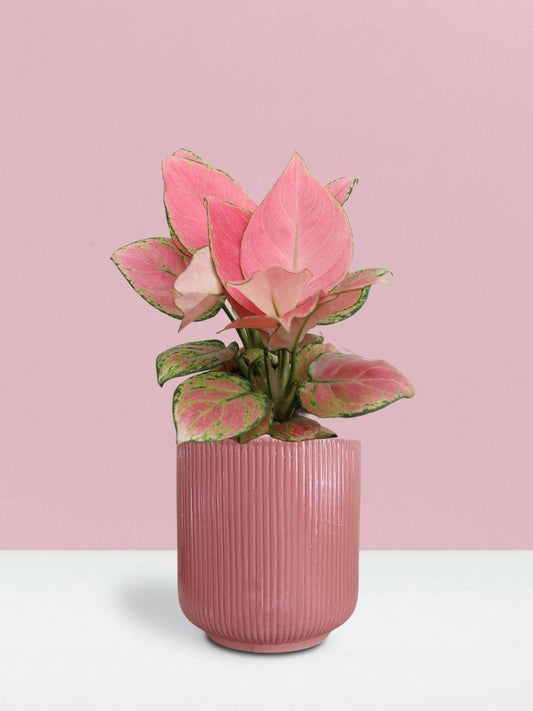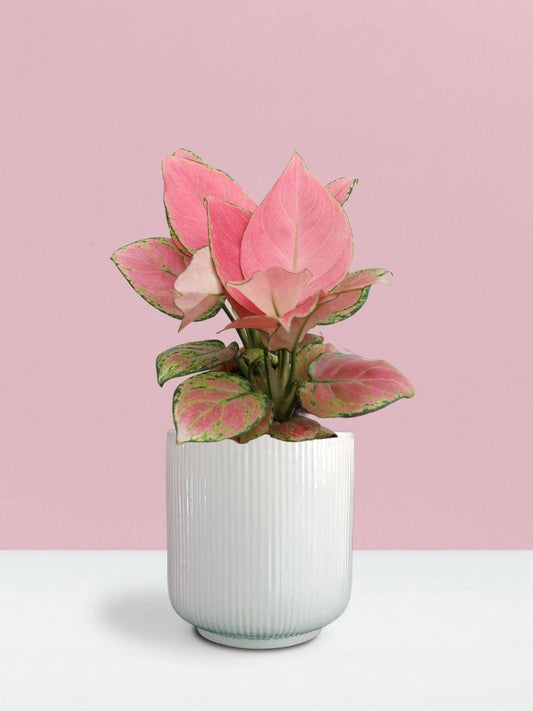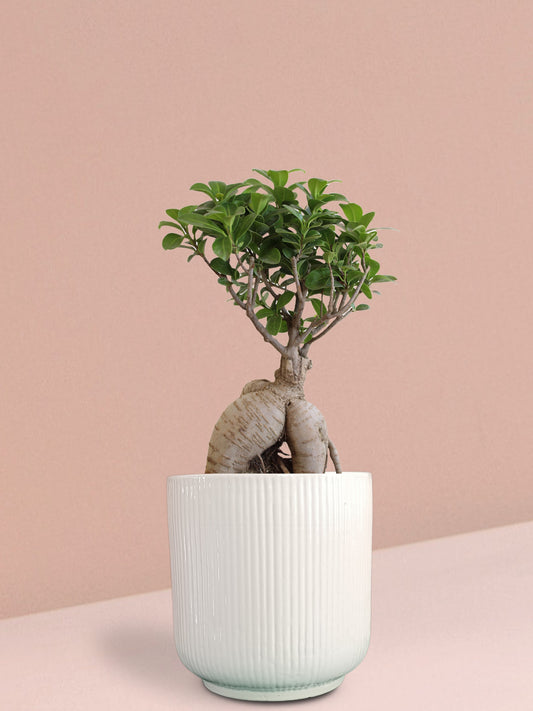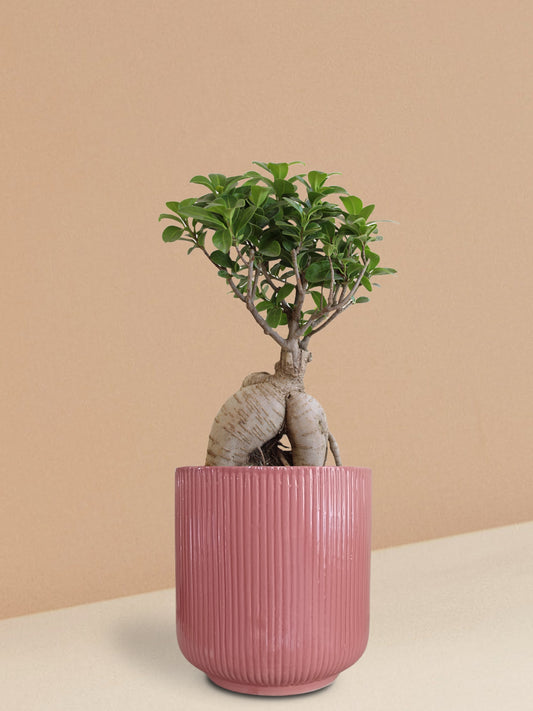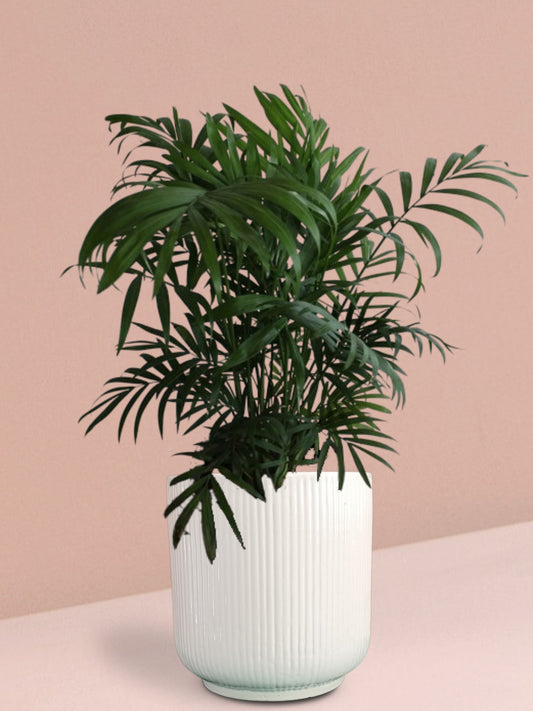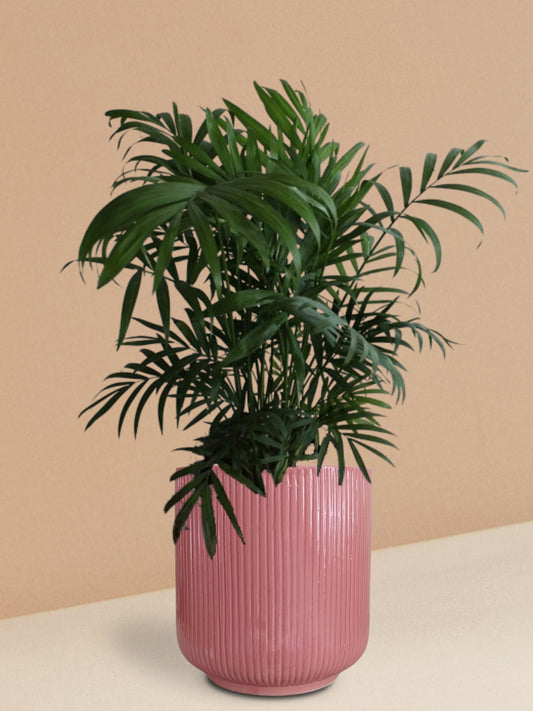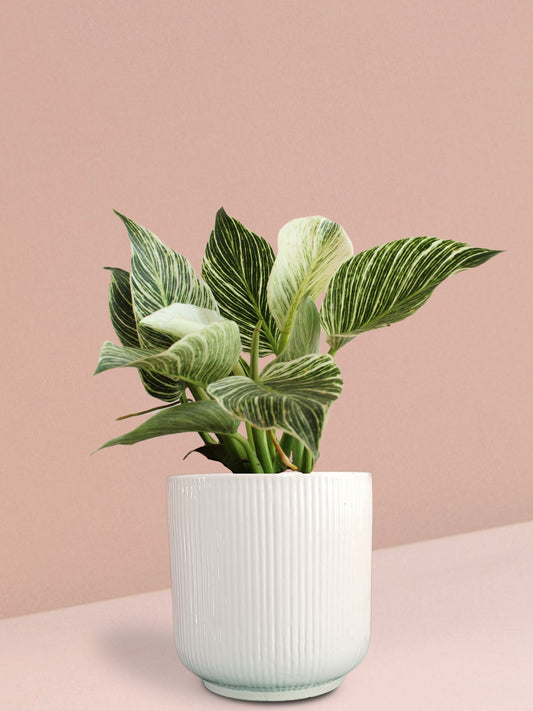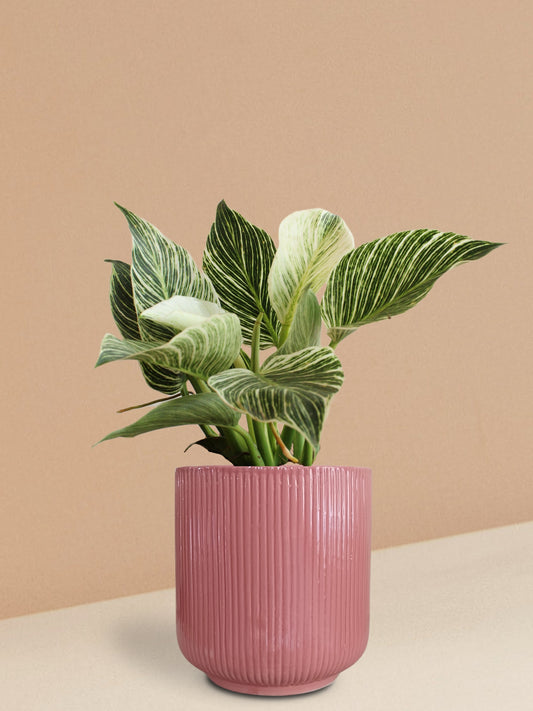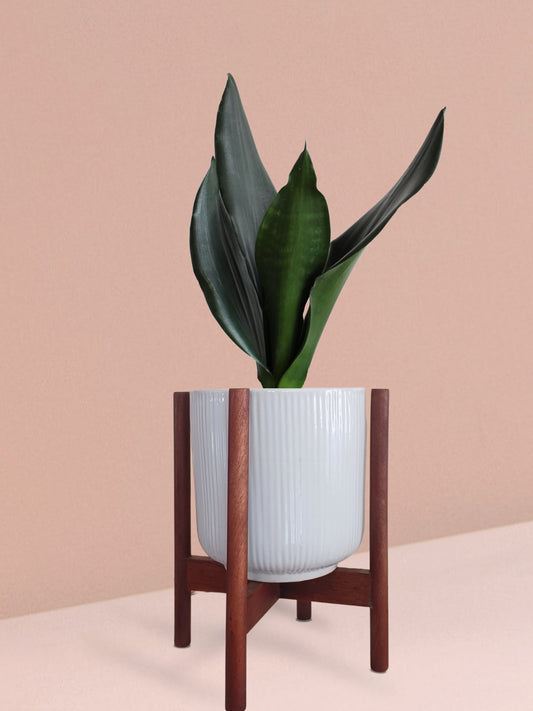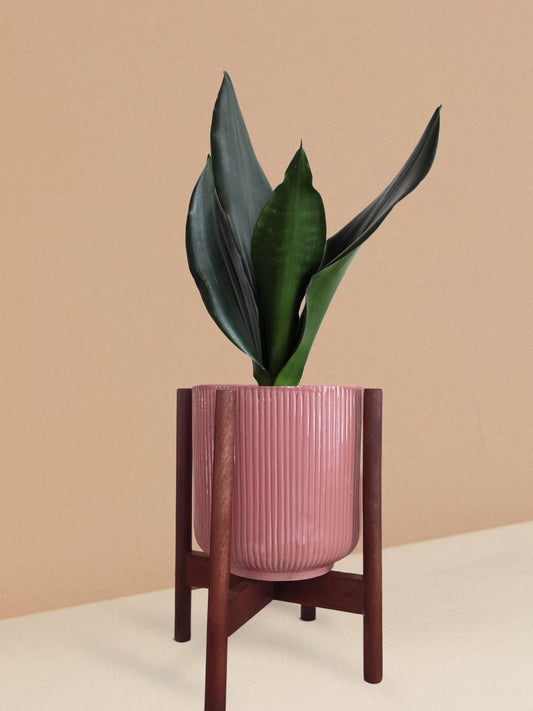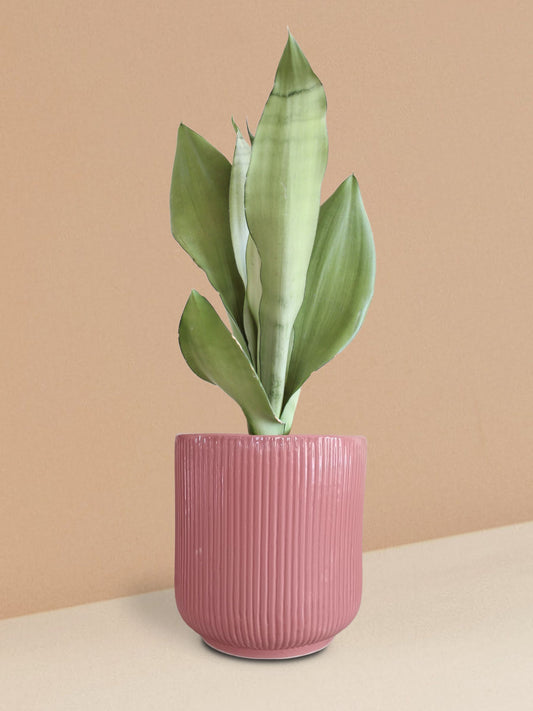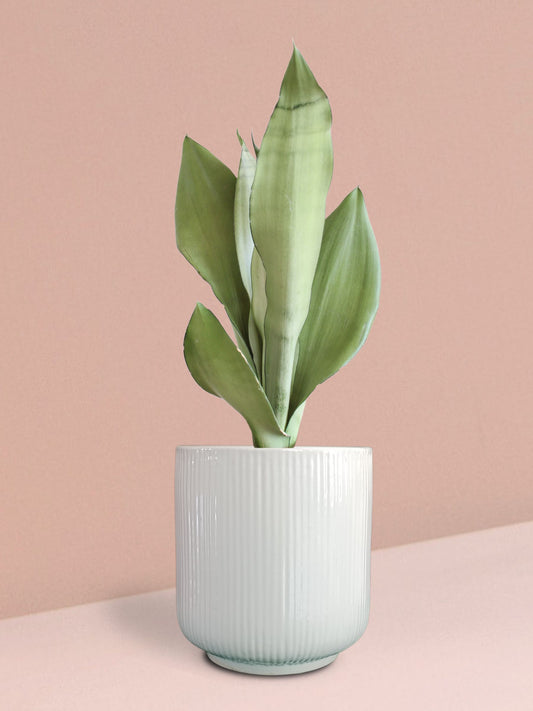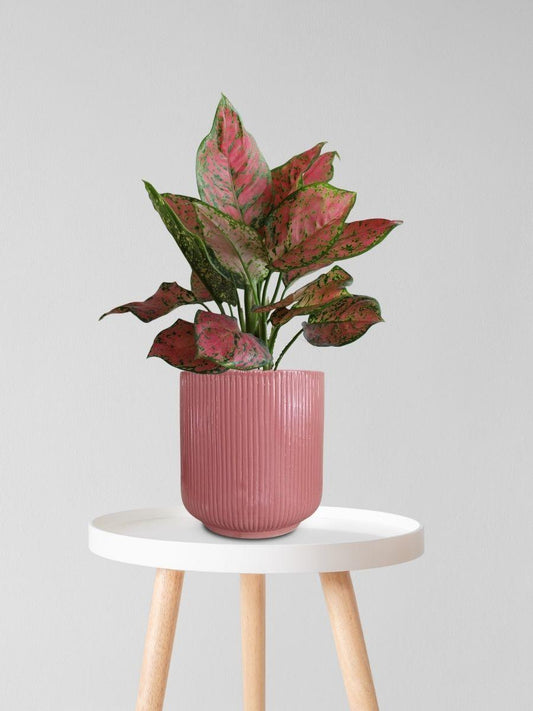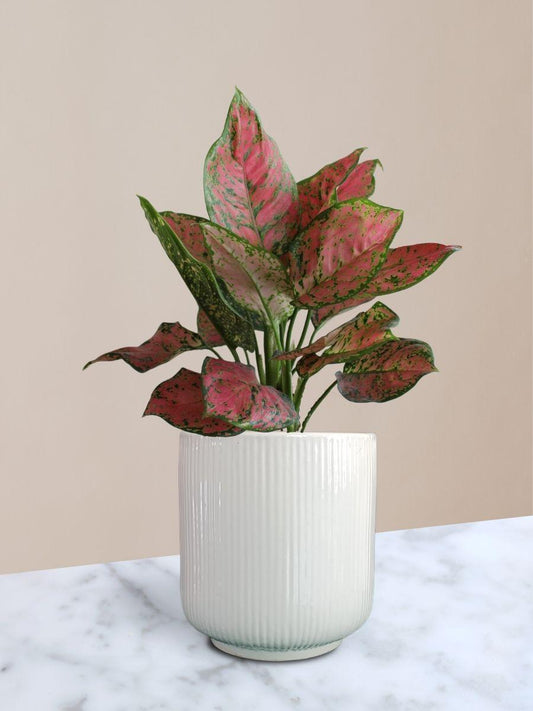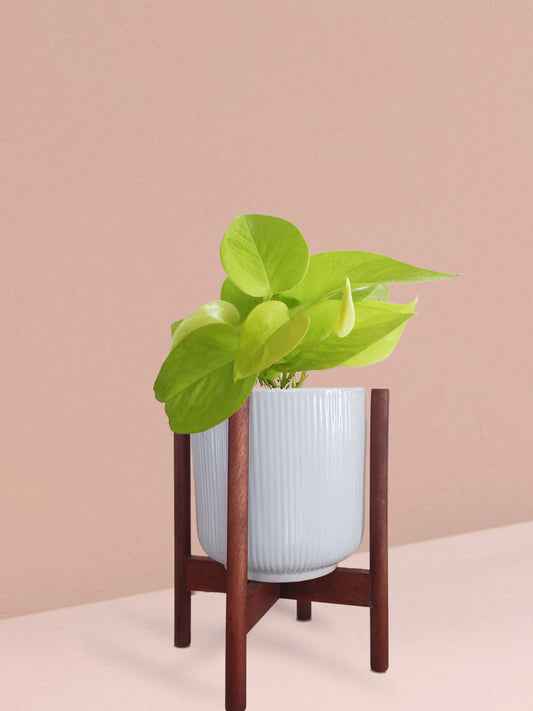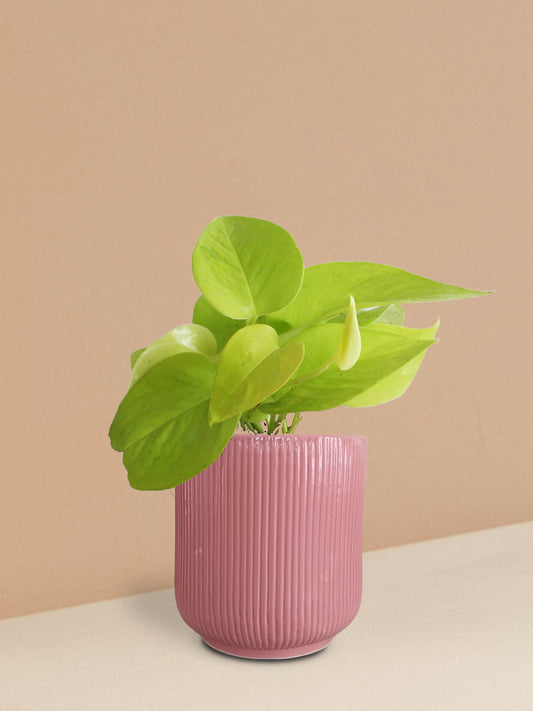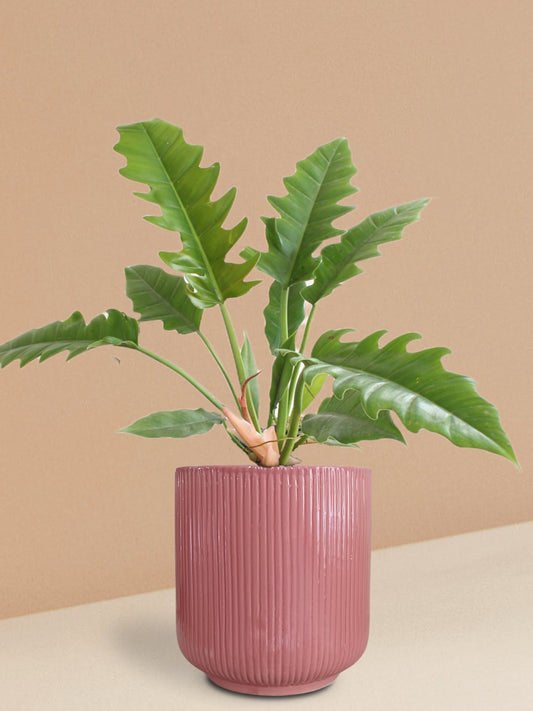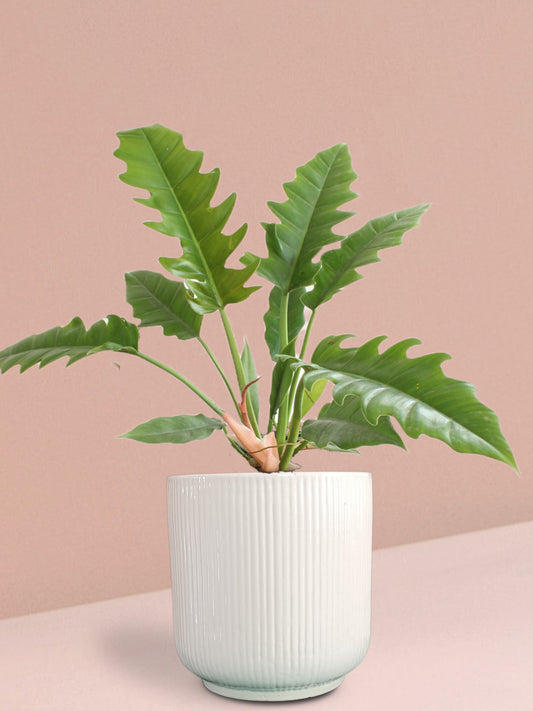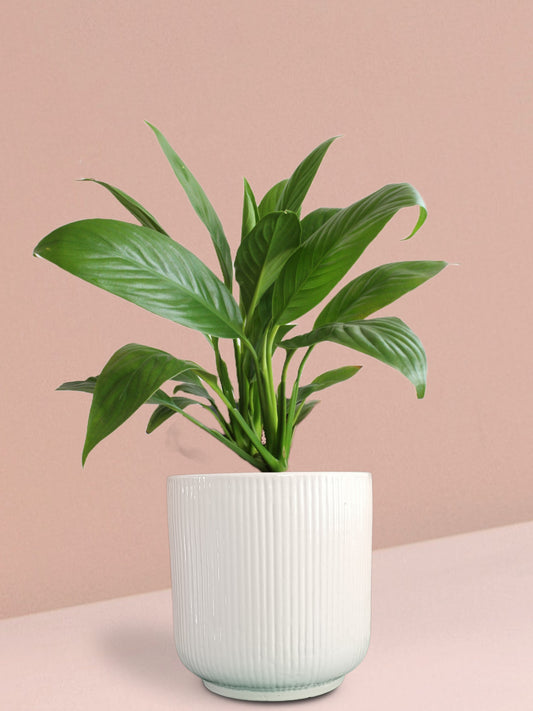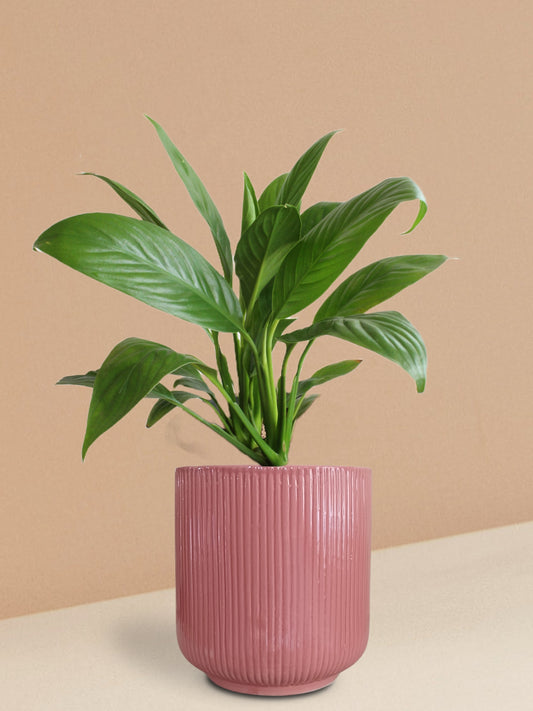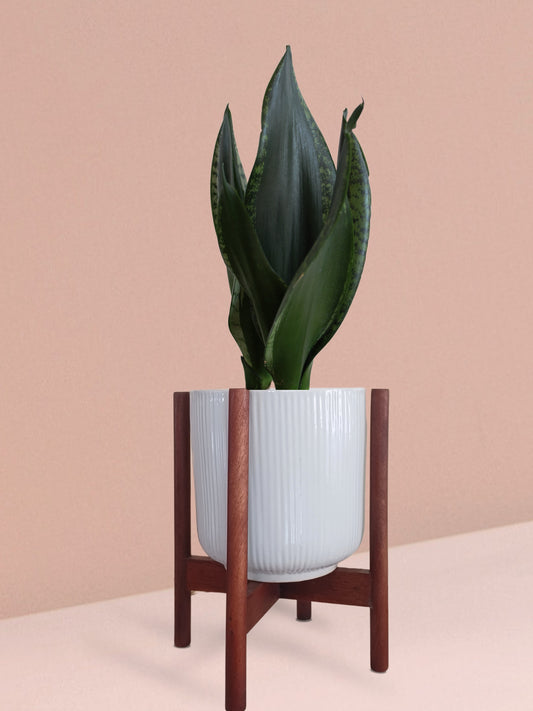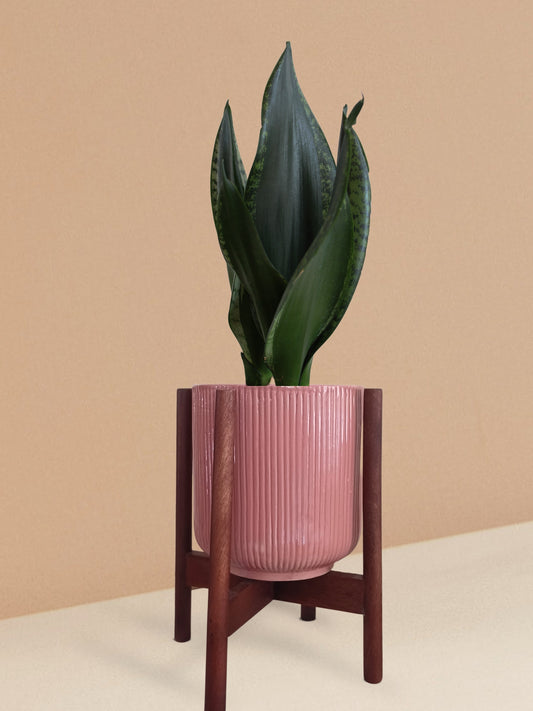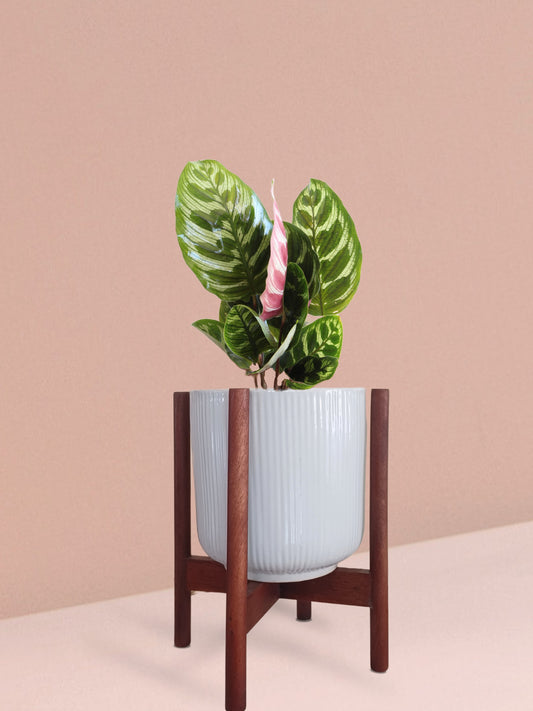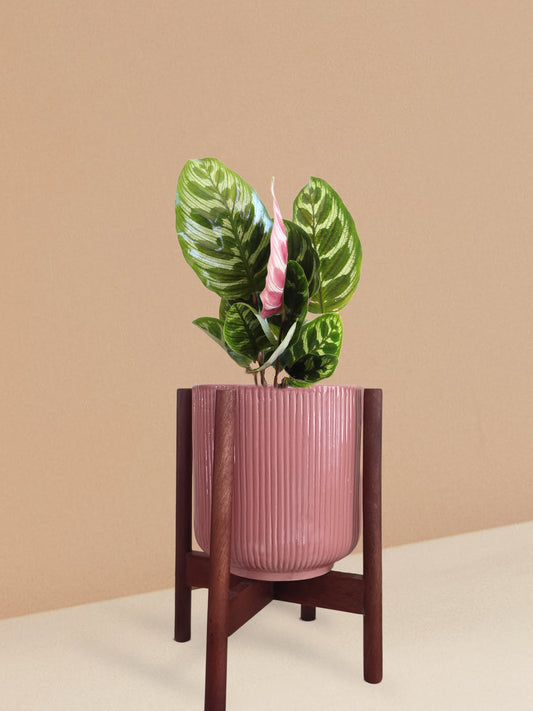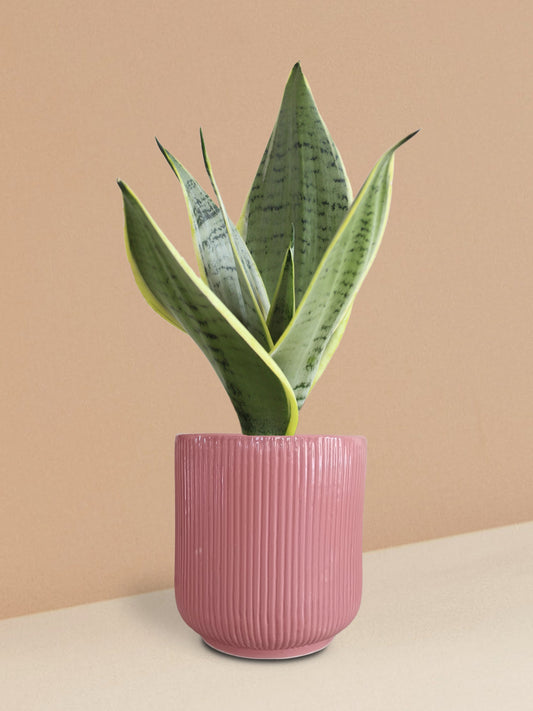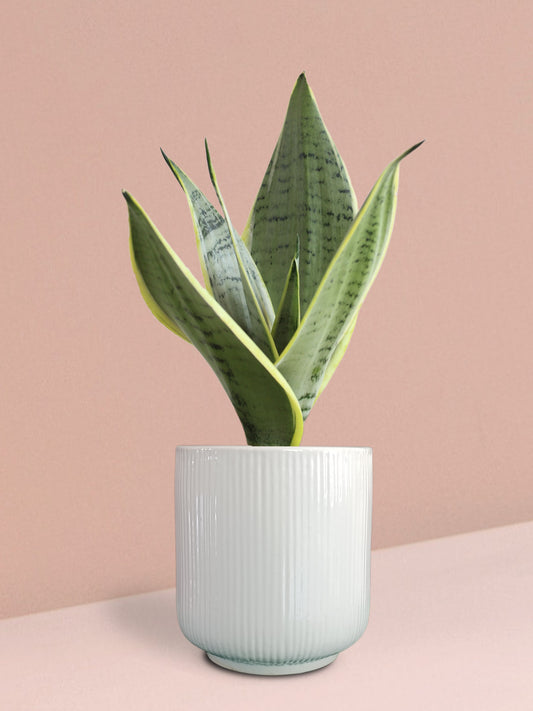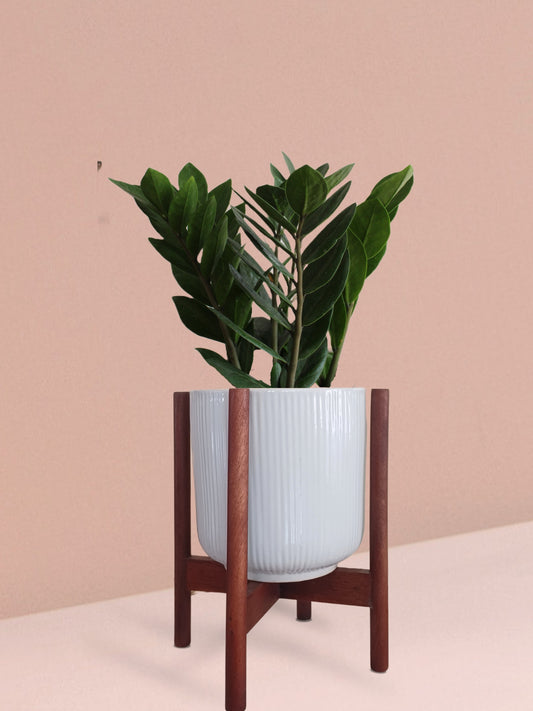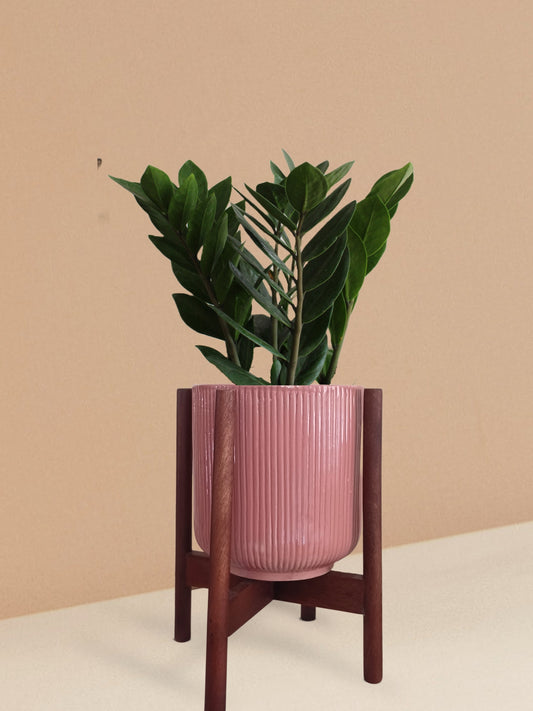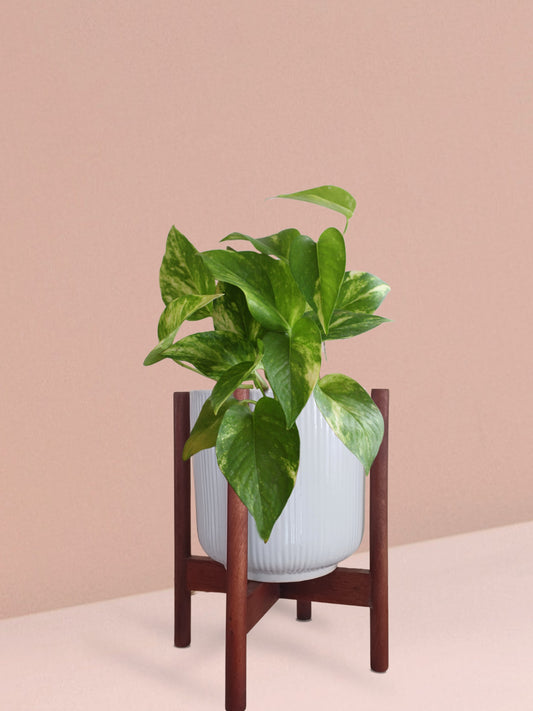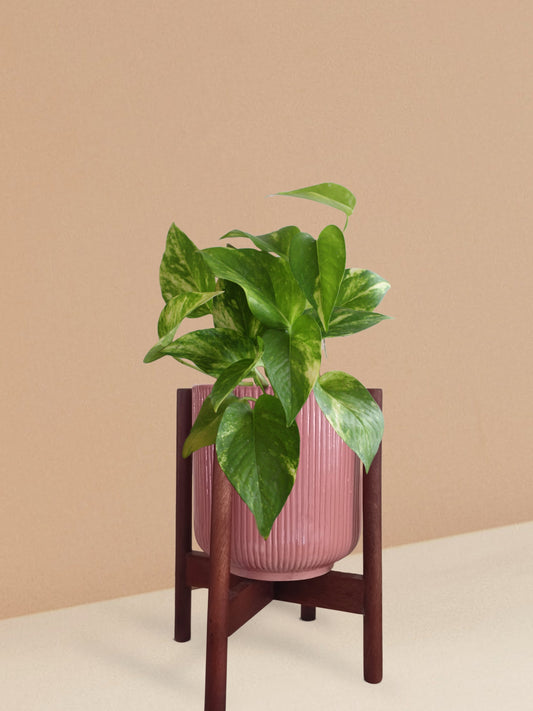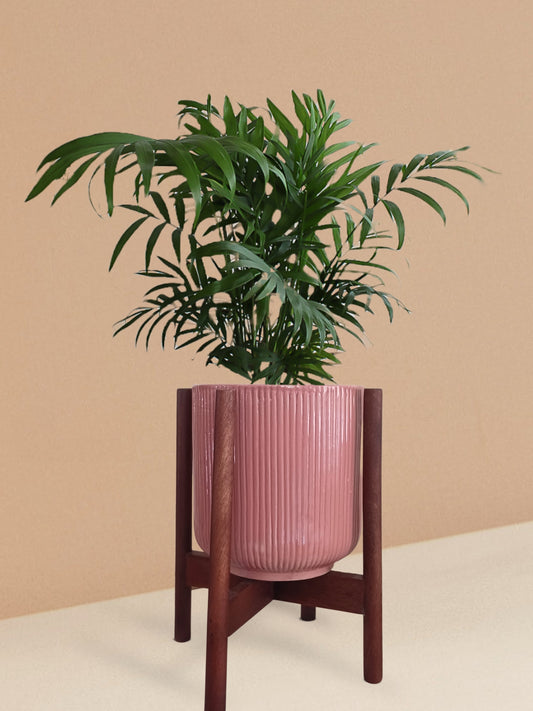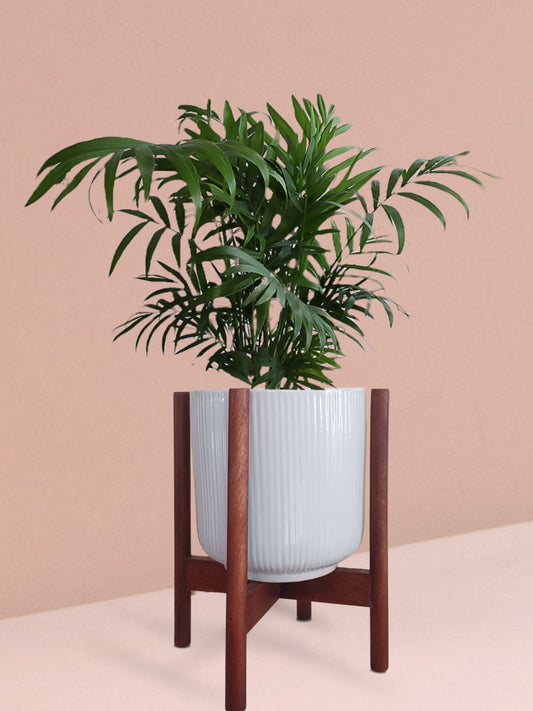
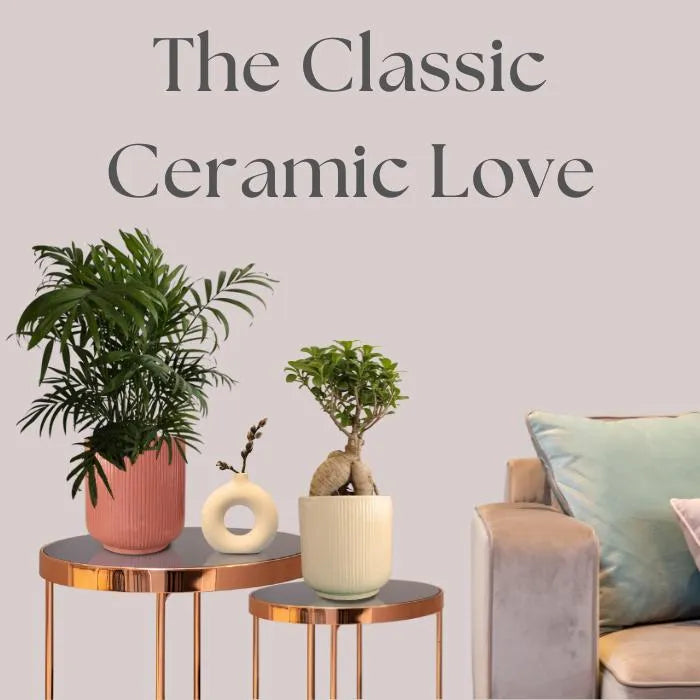
-
Aglaonema Pink Anjamani Plant in Ceramic Pot (Medium)
Regular price ₹ 2,039Regular priceUnit price per₹ 2,549Sale price ₹ 2,039Sale -
Ficus Ginseng Bonsai Plant in Ceramic Pot (Large)
Regular price ₹ 3,279Regular priceUnit price per₹ 4,099Sale price ₹ 3,279Sale -
Chamaedorea Palm Plant in Ceramic Pot (Large)
Regular price ₹ 2,559Regular priceUnit price per₹ 3,199Sale price ₹ 2,559Sale -
Birkin Philodendron Plant in Ceramic Pot (Large)
Regular price ₹ 2,519Regular priceUnit price per₹ 3,149Sale price ₹ 2,519Sale -
Snake Plant Black Dragon in Ceramic Pot (Medium)
Regular price ₹ 2,199Regular priceUnit price per₹ 2,749Sale price ₹ 2,199Sale -
Snake Plant Moonshine in Ceramic Pot (Medium)
Regular price ₹ 2,199Regular priceUnit price per₹ 2,749Sale price ₹ 2,199Sale -
Aglaonema Red Valentine Plant in Ceramic Pot (Medium)
Regular price ₹ 2,159Regular priceUnit price per₹ 2,699Sale price ₹ 2,159Sale -
Golden Money Plant in Ceramic Pot (Medium)
Regular price ₹ 1,759Regular priceUnit price per₹ 2,199Sale price ₹ 1,759Sale -
Narrow Escape Philodendron Plant in Ceramic Pot (Large)
Regular price ₹ 2,679Regular priceUnit price per₹ 3,349Sale price ₹ 2,679Sale -
Peace Lily Plant in Ceramic Pot (Large)
Regular price ₹ 2,559Regular priceUnit price per₹ 3,199Sale price ₹ 2,559Sale -
Snake Plant Whitney in Ceramic Pot (Medium)
Regular price ₹ 2,479Regular priceUnit price per₹ 3,099Sale price ₹ 2,479Sale -
Calathea Peacock Plant in Ceramic Pot (Medium)
Regular price ₹ 2,359Regular priceUnit price per₹ 2,949Sale price ₹ 2,359Sale -
Snake Plant Silver Queen in Ceramic Pot (Medium)
Regular price ₹ 2,079Regular priceUnit price per₹ 2,599Sale price ₹ 2,079Sale -
ZZ Green Plant in Ceramic Pot (Medium)
Regular price ₹ 1,919Regular priceUnit price per₹ 2,399Sale price ₹ 1,919Sale -
Gold King Money Plant in Ceramic Pot (Medium)
Regular price ₹ 1,839Regular priceUnit price per₹ 2,299Sale price ₹ 1,839Sale -
Chamaedorea Palm Plant in Ceramic Pot (Medium)
Regular price ₹ 1,999Regular priceUnit price per₹ 2,499Sale price ₹ 1,999Sale
Let customers speak for us
Buy Plants In Ceramic Pots Online
Accordingly, ceramic clay pots undergo a high-temperature firing process to create their form. Thanks to this procedure, they are lightweight, breathable, and long-lasting, which makes them ideal for various plants, even those grown outdoors.
Keep scrolling for more information about ceramic pots, including types of ceramic pots, the environmental impact of ceramic pots, the benefits of ceramic pots for plants, the best plants for ceramic pots, and care tips for ceramic potted plants.
Why Choose Plants in Ceramic Pots?
Plants in ceramic pots are a great option for several reasons. First of all, it's a green (sustainable or eco-friendly) choice. If you don't drop it in your driveway, ceramic pots are lovely and last for years, so the energy and materials necessary to make and distribute them are well spent.
Another, ceramic planters allow for more water to reach the roots while yet maintaining adequate air circulation. This is because ceramics, in contrast to metals, do not undergo solar thermal expansion. In contrast to metal containers, ceramic pots can be kept at a more tolerable room temperature.
Furthermore, ceramic pots are more cost-effective and efficient since they retain water better and allow plants to absorb only what they require. You can reduce the frequency of watering plants by switching to ceramic pots instead of plastic ones because they take longer to dry out. If you have big trees or plants outside that are subject to wind or rain, this heavy-duty material is a good option.
Our Top Picks for Plants in Ceramic Pots
Greenkin offers a variety of plants in ceramic pot collections for you to pick from. And you don't need to worry about breakage during shipment. Explore Greenkin Our Top Picks for Plants in Ceramic Pots:
- Golden Money Plant in Ceramic Pot : The Golden Pothos, a fast-growing houseplant with cascading, multicoloured heart-shaped leaves. Its good luck and prosperity symbolic powers as well as being potted in ceramic pots make it a great decor or gift plant.
- Snake Plant Moonshine in Ceramic Pot : Snake Plant Moonshine is popular for its unique look and air-purifying properties. Its shimmering green leaves make every place magical. Moreover, its plant's ceramic pot enhances its charming appearance.
- Jade Plant Plants In Ceramic Pots : The thick, round leaves of jade plants symbolise wealth and prosperity, making them ideal for beginners in gardening. As an added bonus, the ceramic pot elevates its overall aesthetic look.
- Broken Heart Plant in Ceramic Pot : The Broken Heart Plant's vines and delicate heart-shaped leaves add a lovely touch to any interior space. With a ceramic pot, this plant will grow healthy while adding beauty to your living space for years.
- Snake Plant Black Jack in Ceramic Pot : Snake Plant Black Jack has stunning tall sword-like dark green leaves with yellow margins and almost black centre features. Moreover, its beauty is captivating in ceramic pots. Additionally, its low-maintenance air-purifying presence graces every interior space.
- Chamaedorea Palm Plant in Ceramic Pot : Chamaedorea Palm in a large ceramic pot creates a tropical indoor paradise. This palm symbolises peace and harmony with its slender fronds and delicate shape. You'll enjoy its presence and the enormous ceramic pot it's growing in.
- Peace Lily Plant in Ceramic Pot : The Peace Lily in ceramic pots is an attractive decorative plant for your home or the workplace. Not only does it make for a lovely and serene setting, but it also helps to purify the air, which is an ideal option for anyone who seeking a natural element to their environment.
- Peperomia Variegated Plants In Ceramic Pots : Peperomia Variegated plants feature colourful, shaped leaves. They bring charm and beauty to any environment with their unique design. Their uniqueness and diversity make a statement. What makes them excellent is that they are easy to care for and thrive in elegant ceramic pots.
- Aglaonema 'O' Rose Cochin Plant in Ceramic Pot : Aglaonema 'O' Rose Cochin has delicate pink to dark magenta leaves with green and cream. It's perfect for office or home settings to purify the air. Plus, this rare and unique plant in a ceramic pot makes it more visually appealing, happy and healthy.
- Oxycardium Brasil Plants In Ceramic Pots : Oxycardium Brasil adds style to collections beautifully. This little fellow stands out with heart-shaped leaves and green to deep crimson undersides. It stays compact, making it ideal for coffee tables and windowsills. Its ceramic pot makes the setting look more elegant.
Types of Ceramic Pots
Ceramic pottery has several materials and types:
- Porcelain: The most renowned is porcelain. This material is kaolin clay. It is extremely durable, robust, and firm.
- Stoneware: Stoneware has historically been used to produce more than only dinnerware, including plumbing fixtures and statues, due to its durability.
- Earthenware: Earthenware is manufactured from ordinary clay without the high heat used to make porcelain or stoneware, making it less dense and durable.
Greenkin offers many styles and colour combos of ceramic pots that complement your plant and the architecture of your home. No matter what shade you choose, the pot will be the perfect accessory for your indoor plant life.
Some examples of Greenkin plants in ceramic pots types are:
- Elementary Ceramic Planter with Tray: The Elementary Ceramic Planter with Tray is a delightful and traditional artwork. Its Mint Green, Pink & Green , or Salmon Pink colour pots are adorable. To enhance its appeal, it includes a tray.
- Hawaiian Ceramic Planters with Tray: The Hawaiian Ceramic Planter Set with Tray contains a pineapple-shaped ceramic planter in Amber Yellow ,
Navy Blue , and
White colour with a matching tray.
- Plants in Premium Ceramic Pots: Potted plants in ceramic pots are attractive and durable . Materials made of ceramics have a natural brilliance and a long lifespan. On top of that, they work wonderfully as pots for flowering or colourful big plants.
The Environmental Impact of Ceramic Pots
Plants in ceramic pots are better for the environment than plants in plastic pots. Ceramic pots are more durable and reusable. These pots breathe, allowing gas exchange with the growing medium due to their porosity. This is good for largely indoor plants (sparing us oxygen) and especially for overwatered plants (preventing potting soil suffocation).
In contrast, the production process of ceramic pots produces more greenhouse gas emissions and energy consumption. But if you carry plants in ceramic pots for years, the initial effect will be more than compensated. With fewer replacements due to ceramic's longer lifespan, waste is eventually decreased.
Benefits of Ceramic Pots for Plants
In addition to being environmentally beneficial, plants in ceramic pots offer additional benefits for houseplant growing, including:
Visual Appeal and Adaptability: Pots made of ceramic are valued for their beauty and adaptability. Plants in ceramic pots are a stunning and classic design element that complements any indoor or outdoor decor. From traditional to contemporary, plants in ceramic pots come in many forms, sizes, and colours to match any design.
Long-Lasting Durability: Plants in ceramic pots are chip- and crack-resistant, so your plants will have a sturdy home for years, even in adverse weather. Additionally, ceramic pots nourish your plants year-round, making them a good investment due to their integral natural materials.
Permeability and Moisture Control: Ceramic pots' ability to regulate moisture and air circulation prevents root damage and overwatering, as well as extreme temperature swings, making them a great choice for both indoor and outdoor gardening. With these pots, your plants will continue to grow longer.
Mass and Stability: Plants in Ceramic Pots are lightweight and stable, making them easy to move and coordinate with your garden. They also ensure that taller or top-heavy plants remain stationary in windy conditions.
Ideal Plants for Ceramic Pots
Pretty almost every kind of houseplant will look lovely in a ceramic pot. Ceramic has exceptional air permeability. It allows root cells to "breathe," exchange air and water, and sustainably improves root health. Similar to wicks, the lipophilic side of ceramic material draws water up from moist potted soil. Ceramic pots stay moister longer than plastic pots and help maintain the precise moisture levels needed for potted plant health.
Moreover, the super-nutritious potting mix in ceramic pot fills the planting space (without nutrients leaching out of the pot) and allows the root's respiration—oxygen filling the space—so the root operates almost as if the plant were grown in the ground. Last, but not least, besides being excellent for plants, ceramic pots look great! Some examples of ideal plants for ceramic pots are
- Ficus Ginseng Bonsai ,
- Aglaonema Pink Anjamani Plant ,
- Snake Plant Black Dragon in Ceramic Pot ,
- Aglaonema Red Lipstick Plant ,
- Anthurium Mini Red Plant ,
- Aglaonema Red Valentine Plant ,
- Golden Money Plant ,
- Birkin Philodendron Plant ,
- Snake Plant Whitney ,
and more!
Caring Tips for Plants in Ceramic Pots
Some tips for caring for plants growing in ceramic pots are as follows:
- Light Regulation for Plants in Ceramic Pots: Ceramic can get quite hot in direct sun, which might damage fragile plant roots, so place it in partial shade.
- Temperature Control for Plants in Ceramic Pots: Protecting potted plants from temperature changes is important, especially in ceramic pots. Your plant pots may have seen freeze-thaw cycles if you live in a cold climate. In these settings, ceramic pots break easily, therefore insulate them in a protective place.
- Watering Requirements for Plants in Ceramic Pots: Ceramic is less porous than terracotta and retains water better, so ceramic potted plants may need to be watered less often. Water the plant in ceramic pots when the top 1 or 2 inches dry out.
- Soil and Fertilization Guide for Plants in Ceramic Pots: Quality of soil and fertiliser in a ceramic pot can also affect plant growth. Ceramic potted plants need a potting mix because thick soil restricts water flow. Follow package guidelines to fertilise plants with high-quality slow-release or water-soluble fertiliser every few weeks.
- Drainage Guide for Plants in Ceramic Pots: For plant health, ceramic pots must drain well. Make sure pots have enough bottom holes to drain water and prevent stagnation. For drainage, add gravel or rocks to the pot's bottom. Remove excess water from the pot's saucer or tray.
- Repoting Guide for Plants in Ceramic Pots: Upgrade ceramic pots as plants develop. Using an inadequately sized container will stunt a plant's development since roots require space to spread.
- Cleaning Guide for Plants in Ceramic Pots: Clean the outside of ceramic pots occasionally to remove dirt and grime. Review them routinely for cracks or chips and fix them quickly before they worsen or cause water damage. To avoid scratching the bottom of ceramic pots, place them on saucers rather than hard surfaces.
FAQ
Ceramic pots are among the best insulators and protect plant roots from extreme temperature variations. Their porosity allows for improved aeration, which leads to better root development. Furthermore, ceramic pots are available in a variety of colours and patterns, adding aesthetic appeal to your plant display.
Yes, most plants grow well in ceramic pots. However, some that need wet soil may require extra watering due to ceramic's porosity. Succulents and arid plants grow well in ceramic pots.
Ceramic planters are quite simple to maintain. To prevent soil stains from forming, wipe them down on a regular basis using a moist cloth. If you see a white crust in particular spots, gently rinse it with a vinegar solution.
During freezing conditions, the water in the ceramic pores expands, causing the material to break (or crack). It is recommended to move the ceramic pots indoors during the harsh winter months or to a protected spot.
Choose a ceramic pot slightly larger (but not too large) than the plant's root ball to allow for growth and prevent soil moisture from accumulating.
Yes, definitely! You can decorate ceramic pots as you like—paint them, use markers, or anything else that strikes your imagination—but be sure to use safe materials so you don't harm your ceramic potted plants.
Both options are safe. Unglazed pots are better at letting air circulate, whereas glazed ones trap moisture. Consider your plant's water demands and climatic conditions.
Carefully remove the plant's roots and place the root ball into the ceramic pot filled with a new potting mix, filling it up to the plant's natural depth.
Ceramic pots are ideal for herb gardening. Because of the ceramic material's porosity, excessive moisture buildup is avoided, which could result in root rot.
Compared to plastic and metal pots, ceramic pots have a higher weight capacity and may shatter more easily. They could also cost a little extra.
Yes, plants in ceramic pots will look lovely. They'll give a touch of elegance to your home and help the plants develop.
Ceramic pot drilling requires special tools and attention. The alternative option is to choose pots with pre-drilled drainage holes.
Make use of a brush and some water mixed with vinegar or bleach to scrub the afflicted region of ceramic pots. You must rinse and dry the pot thoroughly.
Yes! Traditionally, bonsai have been grown in ceramic pots. Ceramic pots complement the aesthetics of bonsai and have an almost flat depth.
Ceramic pots are ideal for succulents. Since too much water in the soil is what causes root rot, make sure ceramic pots have drainage holes on the bottom.
Direct planting in a pot without drainage causes waterlogging and root damage. To ensure adequate drainage, use a ceramic pot or create a pebble or gravel drainage area.
Ceramic does not significantly alter soil pH. However, ions that wash up on the pot's surface might make the soil acidic or alkaline.
Even though it's possible, ceramic pots aren't used very often in hydroponics because they are heavy and might soak up water.
Plant type, pot size, and environment determine watering frequency. Regularly check soil moisture and water levels when the top inch seems dry.
Ceramic potted plant might be used in open terrariums but not in closed ones due to their porous properties.
Check your plant in a ceramic pot oftenly for common pests and treat them early. Keep the soil from becoming too wet, since pests thrive in damp environments.
Yes, you can reuse ceramic pots for another plant. But before planting another plant, disinfect and clean ceramic pots.
Dark ceramic pots may overheat, damaging plant roots. It's best to use light-coloured pots since they provide some shade on extremely hot days.
Hairline fractures in ceramic pots are often repaired with epoxy glue. However, most severe pots are unrecoverable.
Ceramic pots don't attract bugs. Pots with extra water and decaying plants attract various bugs.
Ceramic pots are good plant pots for creating miniature outdoor ponds or water features. Make sure your pot is coated to prevent water from soaking in.
Ceramic vertical wall planters may be put in, but the wall or structure must support the pots and plants.
Ceramic pots are good for plant propagation. Due to its porosity, the material prevents overwatering and root rot, which are common for plant growth.
Light-coloured pots reflect sunlight, cooling plant roots. Dark pots absorb more heat and are better for lower-temperature zones or warm-loving plants.
Dwarf or semi-dwarf fruit trees may flourish in large ceramic pots. The root system must fit in a huge container.
Ceramic potted plants will undoubtedly green up the workplace. They effectively improve air quality, reduce stress, and boost productivity. They fit any workplace décor with different styles and colours.
Yes, ceramic plant pots make excellent centrepieces and conference decorations. You can decorate them with any plants or flowers to match your event's theme.
Ceramic pots seem more rustic and classier than plastic and metal pots. They endure longer and rarely fade or bend.
- Choosing a selection results in a full page refresh.

